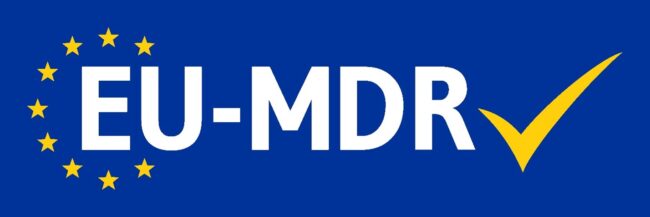The European Union Medical Device Regulation (EU MDR) has brought significant changes to the medical device industry, aiming to enhance safety, performance, and traceability of medical devices within the EU market. For manufacturers, this means implementing robust quality systems that comply with the new regulatory framework. Patrick Gora of Rochester provides this step-by-step guide will cover the essential components of a compliant quality system, including documentation, risk management, and post-market surveillance, and offer practical tips for aligning existing quality systems with the new requirements to ensure ongoing compliance.
Understanding the EU MDR Requirements
The EU MDR, which replaced the Medical Device Directive (MDD), came into full effect in May 2021. It imposes stricter requirements on manufacturers, with a greater emphasis on clinical evidence, traceability, and post-market surveillance. The regulation aims to ensure that medical devices are safe and perform as intended throughout their lifecycle.
Step 1: Establish a Quality Management System (QMS)
A Quality Management System (QMS) is the foundation of compliance with the EU MDR. It ensures that all processes related to the design, production, and distribution of medical devices are controlled and consistently meet regulatory requirements.
Key Components of a QMS:
- Quality Manual: A comprehensive document that outlines the QMS structure, policies, and procedures.
- Standard Operating Procedures (SOPs): Detailed instructions for performing tasks consistently.
- Document Control: Procedures for managing documents to ensure they are current, accessible, and properly archived.
- Training Programs: Ensuring that all employees are adequately trained on the QMS and regulatory requirements.
Step 2: Comprehensive Documentation
Documentation is a critical aspect of the EU MDR. It provides evidence that a manufacturer’s processes and products comply with regulatory requirements.
Essential Documentation Includes:
- Technical Documentation: Detailed information about the device, including design, manufacturing processes, risk management, and clinical evaluation.
- Quality Policy and Objectives: Clear statements of the organization’s commitment to quality and continuous improvement.
- Device Master Record (DMR): Comprehensive documentation of the specifications and production processes for each medical device.
Practical Tip: Regularly review and update documentation to reflect changes in processes, regulations, and technological advancements.
Step 3: Risk Management
The EU MDR places a strong emphasis on risk management throughout the lifecycle of a medical device. Manufacturers must identify, assess, and mitigate risks associated with their products.
Risk Management Process:
- Risk Analysis: Identify potential hazards and evaluate their severity and probability.
- Risk Evaluation: Determine whether identified risks are acceptable or need mitigation.
- Risk Control: Implement measures to reduce risks to acceptable levels.
- Risk Management Plan: Document all risk management activities and their outcomes.
Practical Tip: Utilize ISO 14971, the international standard for risk management in medical devices, to guide your risk management process.
Step 4: Clinical Evaluation
The EU MDR requires manufacturers to provide clinical evidence demonstrating that their devices are safe and perform as intended. This involves a systematic and planned process to continuously generate, collect, analyze, and assess clinical data.
Clinical Evaluation Process:
- Clinical Evaluation Plan (CEP): Outline the methodology and criteria for the clinical evaluation.
- Literature Review: Analyze existing clinical data from scientific literature.
- Clinical Investigations: Conduct studies to gather clinical data specific to the device.
- Clinical Evaluation Report (CER): Summarize the clinical data and provide conclusions about the device’s safety and performance.
Practical Tip: Maintain up-to-date clinical data to support ongoing compliance and post-market surveillance activities.
Step 5: Post-Market Surveillance (PMS)
Post-market surveillance is a proactive process to monitor the performance of a medical device after it has been placed on the market. It ensures the ongoing safety and effectiveness of the device.
PMS Activities Include:
- PMS Plan: A documented plan outlining the activities and processes for monitoring the device in the market.
- Data Collection: Systematically collect data on the device’s performance and adverse events.
- Periodic Safety Update Report (PSUR): Regular reports summarizing PMS data and any actions taken.
- Post-Market Clinical Follow-Up (PMCF): Ongoing clinical studies to gather additional data on the device’s performance and safety.
Practical Tip: Integrate PMS activities into your QMS to ensure continuous monitoring and prompt response to any issues.
Step 6: Aligning Existing Quality Systems
For manufacturers with existing quality systems, aligning with the EU MDR involves a thorough review and update of current processes and documentation.
Steps for Alignment:
- Gap Analysis: Identify gaps between existing quality systems and EU MDR requirements.
- Action Plan: Develop a plan to address identified gaps, including timelines and responsibilities.
- Training: Ensure all staff are trained on the new requirements and any changes to processes.
- Audits: Conduct internal audits to verify compliance and identify areas for improvement.
Practical Tip: Engage with Notified Bodies early in the process to understand their expectations and requirements for compliance.
Implementing an effective quality system under the EU MDR is a comprehensive process that requires careful planning and execution. By establishing a robust QMS, maintaining thorough documentation, conducting rigorous risk management, performing clinical evaluations, and ensuring ongoing post-market surveillance, manufacturers can achieve and maintain compliance with the EU MDR. Regular review and alignment of existing systems will help manufacturers navigate the regulatory landscape and ensure the safety and effectiveness of their medical devices in the EU market.
